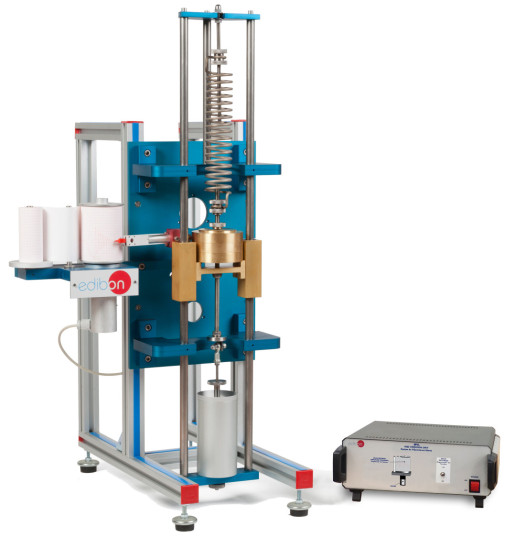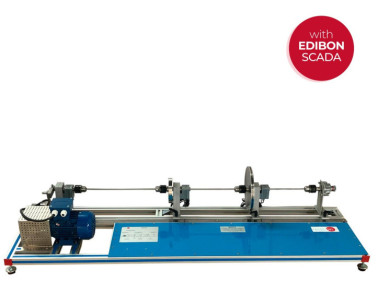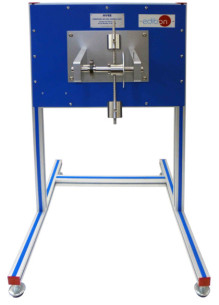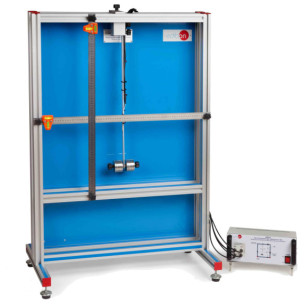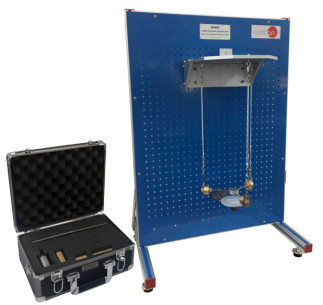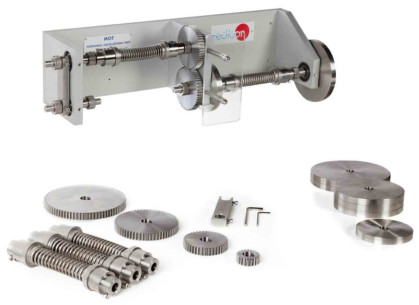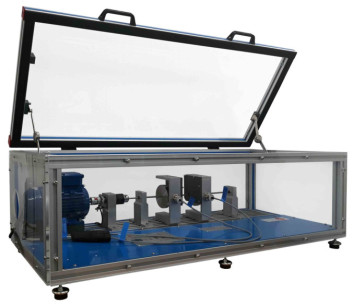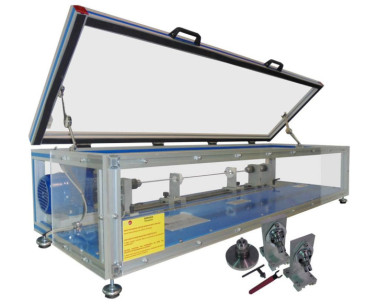MVL Free Vibration Unit
SISTEM INOVATIF
The Free Vibration Unit, "MVL", has been developed to cover a range of demonstrations and experiments which provide the user with an understanding of the free vibrations of a simple spring-mass-damper system.
Ekspansi
Laboratorium
BERITA TERKAIT
GAMBARAN UMUM
The Free Vibration Unit, "MVL", has been developed to cover a range of demonstrations and experiments which provide the user with an understanding of the free vibrations of a simple spring-mass-damper system. Simple adjustments can be made to the unit and the motion of the mass can be readily observed and recorded on the pen recorder provided.
Demonstrations may be carried out to illustrate free and damped vibrations of a simple spring-mass system having one degree of freedom and the response of a second order mechanical system to a step input.
Experiments can be carried out by the students to investigate the relationship between the mass of the body, the stiffness of the spring and the period/frequency of oscillation and to observe the effect of viscous damping on the system.
The basic components of the unit consist of a rigid frame with vertical mass carriage guides, an upper mounting plate for the spring and a lower mounting plate for the damper. The mass carriage is constrained by rollers which run along the vertical guides to provide a single degree of freedom with minimum uncontrolled damping.
A pen, attached to the vibrating frame, and a paper strip, drawn by a synchronous motor, provide a means of producing amplitude/timerecordings.
Springs of various stiffness and suitable masses are supplied. The damper is adjustable to provide a wide range of damping.
LATIHAN DAN PRAKTEK PEDOMAN
LATIHAN PRAKTIS YANG DIANDAL TERMASUK DALAM PANDUAN
- Investigation of the relationship between the mass of the body, the stiffness of the spring and the period/frequency of oscillation for a simple spring mass system with one degree of freedom.
- Investigation of the relationship between the applied force, the viscosity of the oil and the velocity for various settings of the adjustable oil damper.
- Observation of how varying the degree of damping affects the response of a second order mechanical system to a step input.
- Observation of the free vibrations of a system having one degree of freedom.
- Study of the effect of viscous damping on the free vibrations of a simple spring-mass-damper system.
- Determination of the damping ratio for a given spring-massdamper system.
PERALATAN SIMILAR TERSEDIA
PERALATAN KOMPLEMENTER
Computer Controlled Torsional Vibration Unit
Vibration of Coil Spring Unit
Free & Forced Vibration Unit
Unit for Studying Free Vibration of a Bar
Simple Harmonic Motion Unit
Unit Osilasi Torsi
Computer Controlled Critical Speed Investigation Unit
Whirling of Shafts Unit
KUALITAS

LAYANAN PURNA JUAL

 Preferensi cookie
Preferensi cookie

